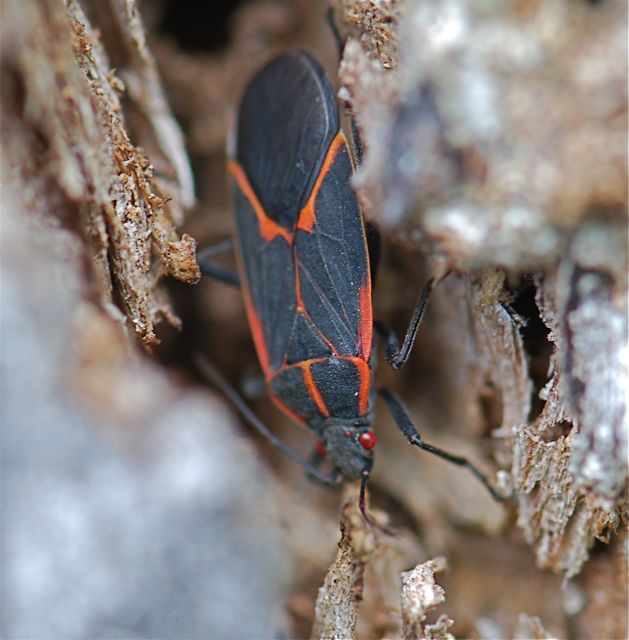
There is a reddish marking along the outer edge of each forewing. It has red eyes and a somewhat flattened and elongated-oval body that is about ½ inch long and inch wide.

Repeated infestations, year after year, often leads to the removal of the host tree. An adult boxelder bug is charcoal gray to black in color with three reddish lines on the dorsal (top) surface of the thorax (chest) region directly behind the head. Homes with female host trees within close proximity should have all vents, attic louvers, screens, etc. However, the clustering on, and entering into, homes is quite problematic and disturbing for many home-owners. Injury to the host plant is of little or no concern. There is one generation per year (Johnson and Lyon). The first instars feed on fallen seeds but later migrate up into the female boxelder tree and feed on newly forming seeds and leaves. Life Cycle:Īdults emerge from over-wintering sites and lay eggs on, or near, the host in late April into early May. They primarily are a nuisance pest in the fall, within homes, and are of little concern while on the host plant. In the late summer and early fall, however, adult boxelder bugs will congregate, sometimes by the thousands, on the sides of buildings which they later try to enter in search of a protected over-wintering site. This pest uses its piercing-sucking mouth parts to feed on foliage in the spring which can cause some distortion to the newly emerging foliage but they primarily feed on the seeds. They are approximately 1/2" in length as adults. These "bugs" are black in color with an orange banding occurring around the margins of the sclerotized portion of their hemelytra (front wings). Primarily found on boxelder ( Acer negundo) but also on silver maple ( A. It is chiefly an annoyance pest in the home. Description: The boxelder bug feeds on the flowers and seeds of female boxelder trees, but does not cause serious injury. Seal cracks and crevices on houses to keep bugs out.Pest: Boxelder Bug ( Boisea trivittatus (Say)) Problem: Boxelder Bug - Leptocoris trivittatus Hosts: Primarily Boxelder (Acer negundo) but maple and ash trees may also be attacked if populations are extremely high. Remove female boxelder bugs where they congregate. Pest monitoring Check new growth on trees or use a beating sheet and dislodge the boxelder bugs.

Both adults and nymphs feed on leaves, flowers, fruit and small twigs until they move to the seeds. In spring, the boxelder bugs adults move from their protected areas and lay red eggs in bark crevices of host trees. They are known to feed on developing apples, pears, grapes, peaches, plums and cherries when their populations are high.īiology and life history The boxelder bug adults overwinter in cracks and crevices, or under siding of houses or in other protected sites. They are found in large aggregations on the seeds of boxelder, and to a lesser extent maple and ash. The major objection to these bugs is that they congregate in clusters on the outside walls, and then invade the home in fall and spring. Damage to host plant seed is minimal since damaged seeds are shed later in the season.

The eggs are red and the bright red nymphs look like the adult without wings. The front wings and thorax are gray-black to black with thin bright red markings. Pest description and damage The adult boxelder bug is a red, flat, and elongate bug about 0.5 inch long.


 0 kommentar(er)
0 kommentar(er)
